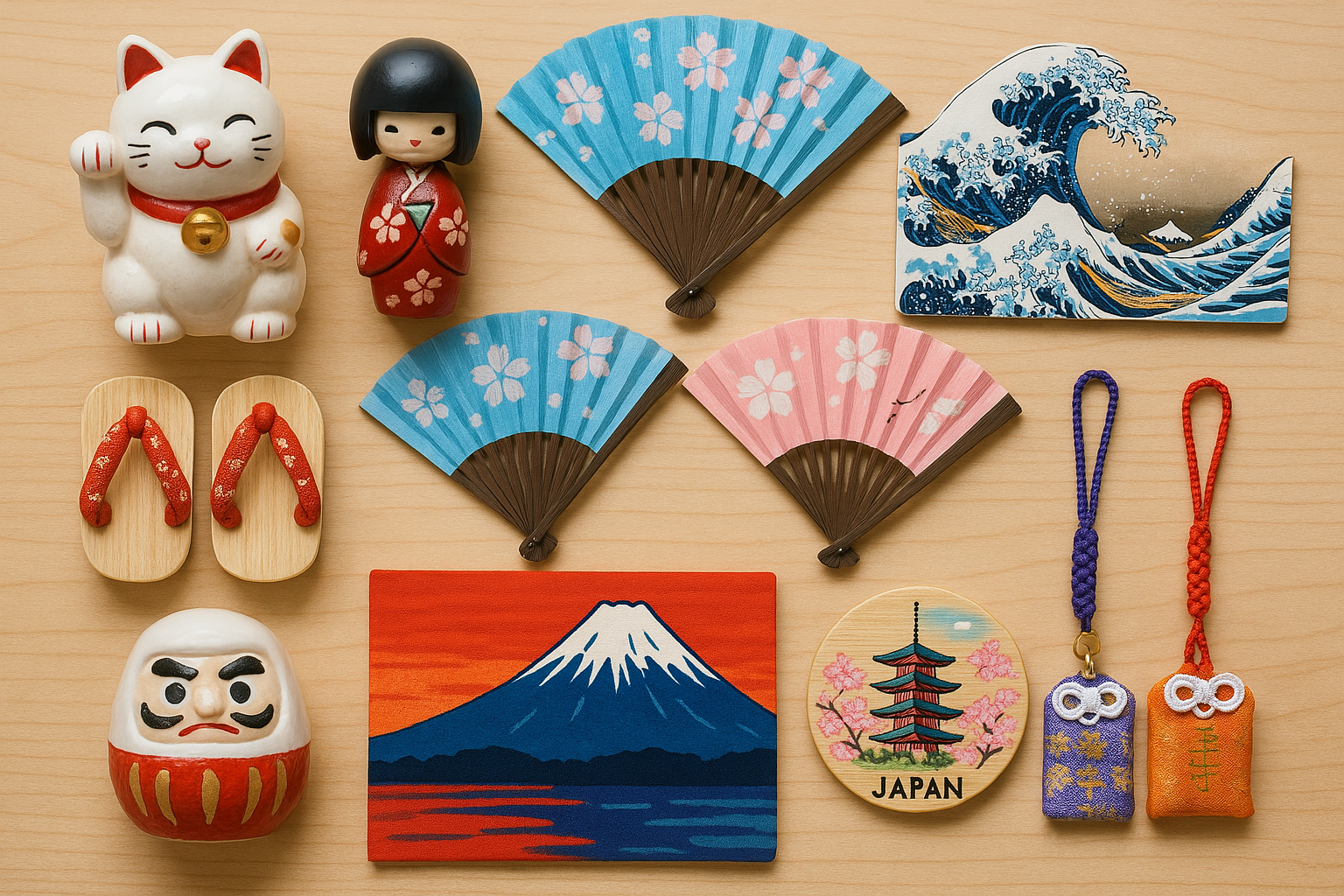- Welcome to the Land of Unique Keepsakes
- Why Traditional Souvenirs Matter More Than You Think
- Top 5 Traditional Souvenirs You Shouldn’t Miss
- Where to Find Authentic Souvenirs
- Souvenir Shopping Etiquette: What You Should Know
- My Personal Favorite Souvenir Story
- Wrapping It All Up: Take a Piece of Japan With You
Welcome to the Land of Unique Keepsakes
Japan is a treasure chest of culture, tradition, and—let’s face it—really cool souvenirs. Whether you’re hunting for something meaningful or quirky, Japan has you covered. Let me take you on a souvenir safari through my favorite finds across the country. Trust me, your suitcase will thank you later!
Why Traditional Souvenirs Matter More Than You Think
Sure, snacks and electronics are fun, but traditional souvenirs carry the heart and soul of Japan. They’re not just mementos; they’re stories you can hold in your hand, steeped in centuries of culture and craftsmanship. It’s like taking home a little piece of Japan’s spirit—no Wi-Fi required.
They Tell a Cultural Story
From feudal folklore to spiritual symbolism, each traditional item is packed with meaning. Owning a Daruma isn’t just about decoration—it’s about embracing a philosophy of perseverance. Every souvenir has a story. You’re not just buying stuff; you’re collecting legends.
They’re Crafted with Care
Traditional souvenirs aren’t mass-produced in faceless factories. Many are handmade by artisans who pour their passion into every brushstroke or carving. It’s like getting a one-of-a-kind art piece for the price of a decent lunch!
Top 5 Traditional Souvenirs You Shouldn’t Miss
Choosing just five was like picking a favorite ramen shop in Tokyo—impossible, but fun. Here are the five souvenirs I always recommend to first-time visitors. They’re beautiful, meaningful, and guaranteed conversation starters when you get home.
1. Maneki Neko – The Beckoning Cat
You’ve seen them everywhere—those adorable cats waving from shop windows. But did you know their raised paw has meaning? Left paw welcomes customers, right paw brings wealth. I once bought one from a tiny shop in Yanaka, and my freelance gigs tripled that month. Coincidence? Maybe. But I’m not taking any chances.
Color Meanings You Didn’t Know
White means happiness, gold invites prosperity, black wards off evil spirits. Pick one that fits your vibe. I keep a red one near my laptop for health—it hasn’t cured my posture, but it makes me smile.
2. Kokeshi Dolls – The Wooden Charmers
These minimalist wooden dolls with oversized heads and no arms might seem simple, but they’re packed with character. I got mine in Tohoku from an old man who told me, “She’s good luck.” She now guards my bookshelf like a tiny samurai.
Each Region Has Its Own Style
From Naruko’s rounded elegance to Yajiro’s bright floral patterns, each region puts a unique spin on the Kokeshi. It’s like Pokémon, but with cultural depth—and fewer battles.
3. Sensu Fans – Elegance in a Fold
These folding fans aren’t just for cooling down—they’re portable art. I carry one in summer and feel instantly 20% more graceful every time I open it with a flick. Bonus: they’re perfect for dramatic exits.
The Art of Giving Fans
In Japan, fans are often given as farewell or celebration gifts. Just avoid giving four—“four” sounds like “death” in Japanese. You don’t want your souvenir to unintentionally curse someone!
4. Daruma Dolls – Your Motivational Buddy
At first glance, the Daruma looks like an angry red roly-poly. But this one-eyed figure is actually a goal-setting powerhouse. Make a wish, fill in one eye, and complete the second when your dream comes true. It’s like a visual to-do list with eyebrows.
How to Use a Daruma
Place it somewhere visible—mine sits beside my kettle. Every morning, it glares at me like, “Did you finish that blog post yet?” Effective, if slightly intimidating motivation.
5. Furoshiki – Wrapping with a Twist
Furoshiki are square pieces of cloth used for wrapping things beautifully. They’re eco-friendly, stylish, and turn gift-giving into an art form. I once wrapped a wine bottle in one and got more compliments on the wrap than the wine. True story.
Modern Uses for an Old Tradition
You can use Furoshiki as a bag, scarf, or even a table decoration. It’s the Swiss Army knife of Japanese textiles. Best part? They fold down to almost nothing in your suitcase.
Where to Find Authentic Souvenirs
While tourist traps are everywhere, the real gems are tucked in lesser-known corners. Skip the airport shops and follow me to the real treasure chests of tradition.
Local Markets and Street Stalls
Kyoto’s Nishiki Market, Asakusa’s Nakamise Street, and Kanazawa’s Omicho Market are bursting with handmade goods. Pro tip: go early, chat with vendors, and don’t forget to snack while you shop.
Museum and Shrine Shops
Museums often sell reproductions of artifacts or crafts by local artisans. And shrine shops? They’re full of lucky charms (omamori) and hand-carved trinkets with spiritual flair. Plus, buying supports temple upkeep—it’s good karma shopping!
Souvenir Shopping Etiquette: What You Should Know
Japan is big on manners, even when buying a simple keychain. Here’s how to make your shopping experience smooth and respectful (and avoid accidental faux pas).
Always Say “Arigatou” with a Smile
It sounds simple, but a heartfelt “ありがとう” can light up a vendor’s face. And hey, smiles are free and universal.
Don’t Haggle in Traditional Shops
Unlike some countries, haggling is not customary in Japan—especially not in artisan shops or temple stalls. Respect the price. You’re paying for quality and tradition, not just an item.
My Personal Favorite Souvenir Story
Years ago, I bought a tiny Kokeshi for a friend who was feeling lost. I tucked a note inside: “You’ve got this.” Months later, she told me she read it every time she doubted herself. That little wooden doll carried more than wood and paint—it carried encouragement. And that’s the true power of a thoughtful souvenir.
Wrapping It All Up: Take a Piece of Japan With You
From lucky cats to motivational dolls, traditional Japanese souvenirs aren’t just things—they’re memories wrapped in meaning. So, as you wander through temples, alleyways, and shopfronts, keep an eye out for something that speaks to you. And when you find it, bring it home—not just as a souvenir, but as a story worth telling.






コメント